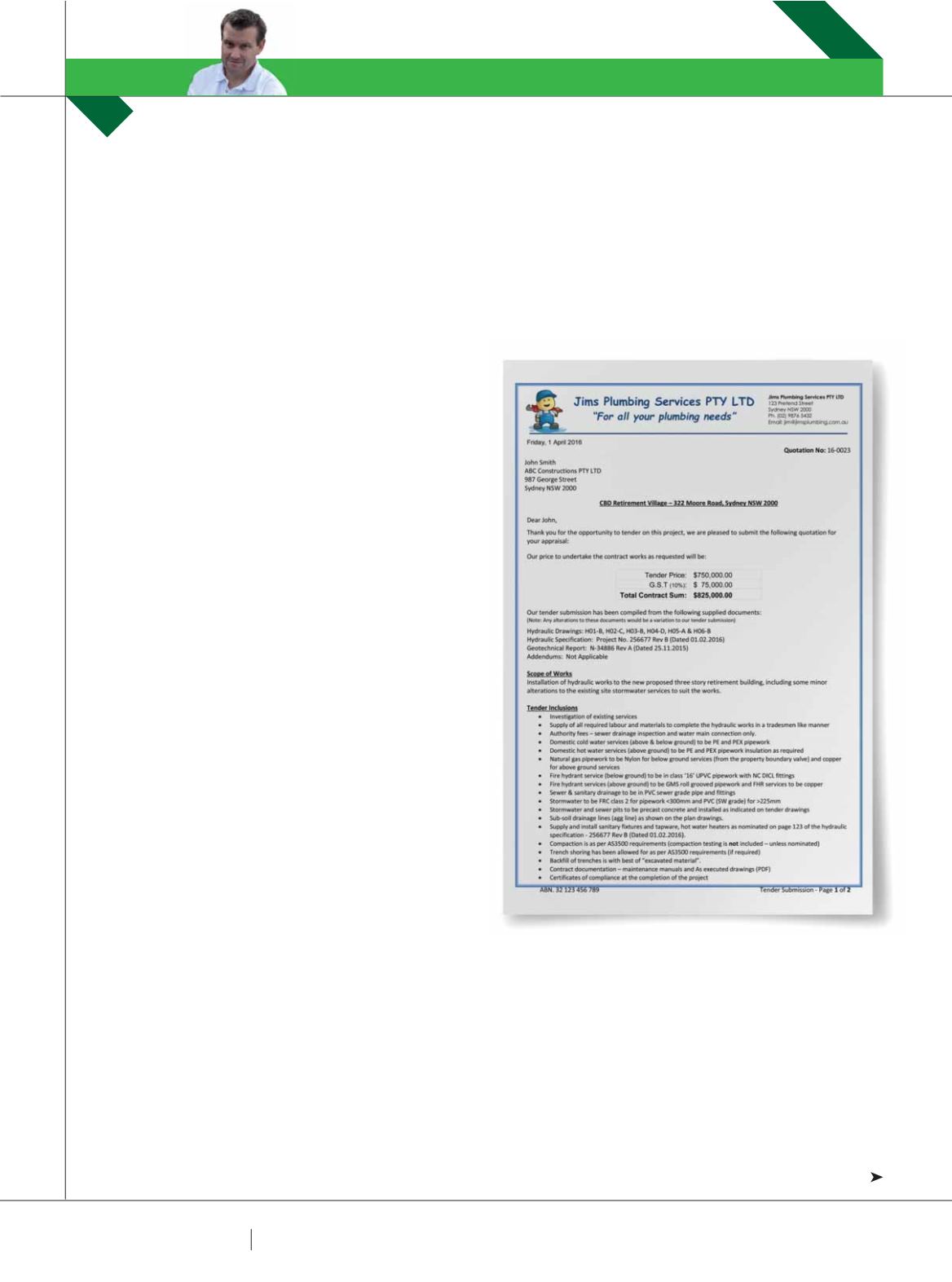

7 8
PLUMBING CONNECTION
WINTER 2016
SUBMITTING A PROFESSIONAL
TENDER LETTER
Q
uoting or ‘tendering’ for a project is a fundamental
necessity for any plumbing business to be awarded
the contract of a large job. There is a comprehensive
process that unfolds before the first ground is broken on a
project and it’s important to ensure that all the “boxes have
been ticked” before signing the works contract.
The decision to submit a tender for a project should be a
carefully considered process that balances the opportunity
against a realistic evaluation of the likelihood of success and
the ability of your business being fit to perform the required
works.
The approach should be systematic, incorporating an
evaluation of each facet of the project coupled with the
requirements of the potential client. Submitting a tender is
often a time consuming process and it’s important to target
the projects that suit your businesses capabilities.
Communication is an extremely important element of
the tendering process and it is crucial that you inform the
client as early as possible of your intention to submit a
tender or not. If you decide not to submit a tender, then it
is courteous to send an ‘unable to tender’ letter explaining
the reasons of your decision. This particular project may not
suit your requirements and that’s fine, but don’t disappoint
a client by not informing them. Remember, by maintaining
a good relationship with a client ensures you will have an
opportunity to tender (and hopefully win) future projects.
So, you have made a decision to quote a project. You’ve
conducted a site visit, read all the documents and compiled
a price that you have confidence in. The next thing to do is
present the price in a formal submission also known as a
tender letter.
A well-presented, professional tender letter should
focus on the requirements within the invitation to tender
(ITT) document and/or as stipulated by the client. It is very
important to clearly address each element of the tender
request and if you have any additional information useful to
the submission then it should be presented as an addition
within the tender letter. Offering cost saving alternatives
can be a great way of separating yourself from the
crowd, while giving the potential client confidence in your
submission.
The design and layout of the tender letter should include
a header with your business details and logo. The footer
should contain the page number and project name title.
The submission should be divided into clear sections, either
as specified by the buyer or created to provide a clear and
logical presentation of the proposal content.
A TYPICAL TENDER SUBMISSION SHOULD INCLUDE (BUT,
NOT LIMITED TO):
Scope of Works -
This is a brief description of the required
works as shown within the tender documents.
ANDY FARRELL
EXPLAINS THAT WHEN IT COMES TO SUBMITTING TENDER LETTERS, IT’S MORE THAN JUST A GAME
OF NUMBERS.
A sample of a professional tender letter. Visit www.
plumbingpack.com.auto download the template.
ESTIMATING
ANDY FARRELL
















